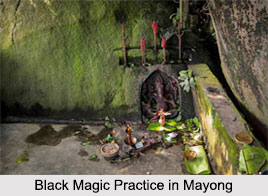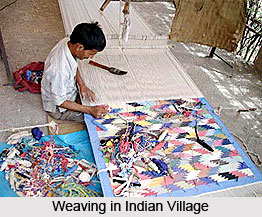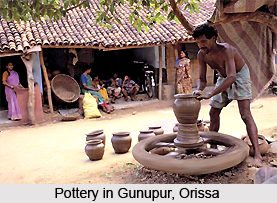 Mayong, situated in the Morigaon district of the Indian state of Assam, is a village famed as the land of black magic or the black magic capital of India. Also known as Mayang, it is nestled along the banks of River Brahmaputra, at a distance of about 40 kilometers from the city of Guwahati. Previously, Mayong was regarded as the cradle of black magic in India. The village serves as a noted tourist destination owing to its intriguing history.
Mayong, situated in the Morigaon district of the Indian state of Assam, is a village famed as the land of black magic or the black magic capital of India. Also known as Mayang, it is nestled along the banks of River Brahmaputra, at a distance of about 40 kilometers from the city of Guwahati. Previously, Mayong was regarded as the cradle of black magic in India. The village serves as a noted tourist destination owing to its intriguing history.
Etymology of Mayong
It is believed that the village derives its name from the word `Maya` which means illusion and the village is also regarded as the land of illusion. Some say that in Mayong, `Ma` refers to mother Shakti and `Ongo` means part and thus the place refers to the sacred part of goddess Shakti.
 History of Mayong
History of Mayong
As per the historical records, Mayong was the site of human sacrifices, also known as Narabali, till the early modern period. This practice was in vogue in the village in association with the worship of Shakti. Archaeological excavations carried out in Mayong have furnished swords and many other sharp weapons which have similarity with the tools used in other parts of India for human sacrifices. This resemblance suggests that Mayong had been the centre of human sacrifice during the rule of Ahom dynasty in this region.
Legends of Mayong
The village of Mayong is associated with many legends and folklores and its mention along with Pragjyotishpura, which is the ancient name for Assam, can be found in several mythological epics such as the Mahabharata. Ahom kingdom`s official journal known as "Buranjee" also mentions Mayong multiple times. Legends say that Chief Ghatotkacha of Kachari Kingdom, which ruled over the region of Assam, partook in the Great Battle of Mahabharata and fought with his magical powers.
Black Magic of Mayong Village
Mayong, the land of occult practices, attracts a number of tourists and caters them the knowledge of black magic. It is often been said that during Mughal Emperor Aurangzeb"s reign, Mughal armies did not fear the armies of Assam, but the power of black magic of the Mayong people. Mayong Black Magic and Witchcraft Museum in Guwahati preserves the knowledge and stuffs of black magic of Mayong people. This museum is listed as one of the ten most unique museums by National Geographic.
 Tourism in Mayong
Tourism in Mayong
Mayong is a significant destination for tourists and archaeologists. It offers a splendid experience of river tourism, cultural tourism, adventure tourism, eco-tourism and pilgrimages. The mysterious culture, traditions and practices of Mayong encompassing black magic are always intriguing to explore. The place has a rich wildlife and its main attraction is Pobitora Wildlife Sanctuary, located nearby, which hosts the highest density of one horned Rhinoceros in the world. A plethora of archaeological relics and articles along with books on black magic and Ayurveda have been exhibited at the Mayong Central Museum and Emporium, which is opened to public since the year 2002. Several hills surround the village and Brahmaputra River towards its west side adds to its scenic beauty. A number of shrines and temples also stand in the village among which the important temples include Shiv Shrine of Kachashila, Ganesh Temple of Hatimuria, Narashinha Ashram of Hiloikhunda etc.
Visiting Information to Mayong
The best time to visit Mayong village is during the winter season. Jagi Road Railway Station and Guwahati International Airport are the nearest to reach Mayong.






